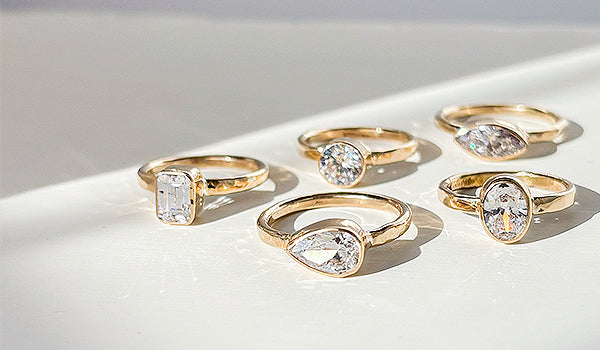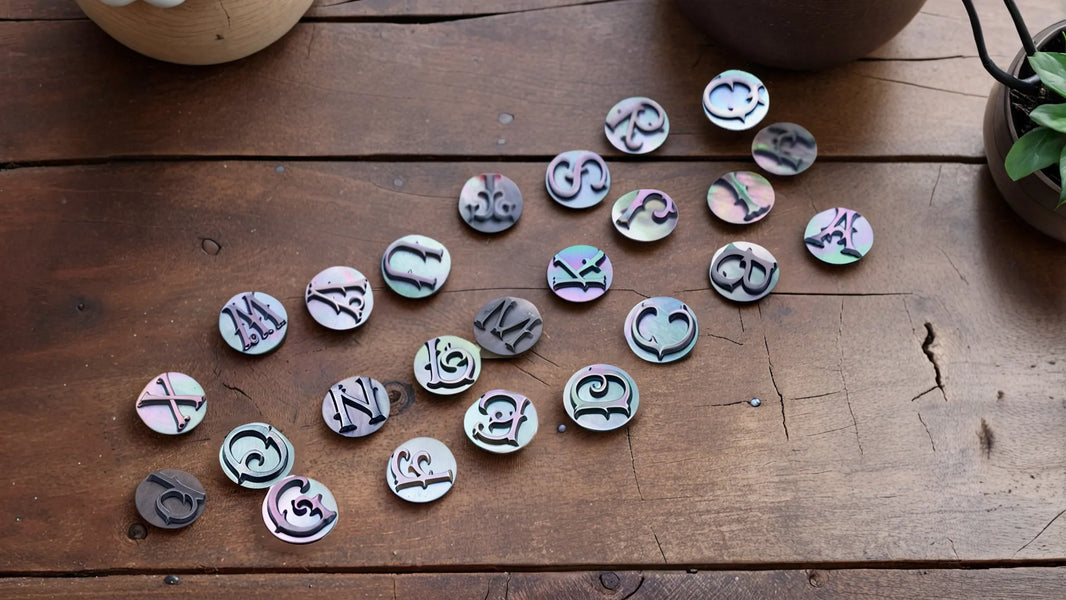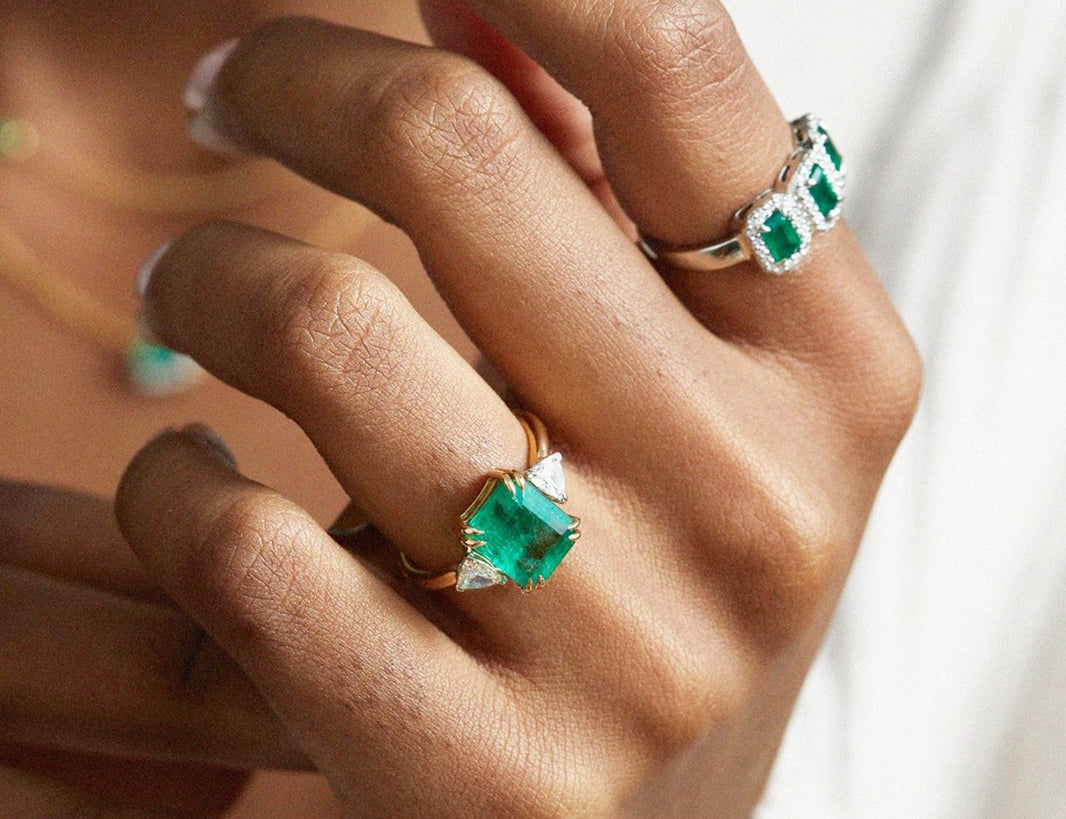Moissanite has a way of turning everyday light into a private fireworks show. That captivating fire is one reason so many couples choose it for engagement rings and daily-wear jewelry. But love meets life at a kitchen counter, a gym bench, a steering wheel, and a granite workspace. The question that matters is simple and practical: do moissanite rings scratch easily? The short answer is no—moissanite is among the most scratch-resistant gemstones you can wear daily. The fuller story, however, is about understanding hardness versus toughness, what really causes scratches in the real world, and how a few smart habits keep your ring pristine for years.
What “Scratch Resistant” Really Means
Gemologists use the Mohs scale to compare how readily one material can scratch another. It runs from 1 to 10, where higher numbers indicate stronger resistance to scratching. Diamonds sit at the top at 10. Moissanite measures about 9.25 on that same scale, placing it firmly among the hardest materials used in jewelry. By contrast, quartz—the crystalline heart of ordinary sand—is about 7. In practical terms, daily surfaces, pockets, purses, and countertops rarely contain anything that can scratch moissanite. That said, hardness is only one pillar of durability. Toughness—the ability to resist chipping from a blow—matters just as much for rings, which live through accidental knocks and bumps. The International Gem Society notes moissanite has no natural cleavage plane, a structural trait that helps it handle sharp shocks, while diamond, though harder, can split along a cleavage plane under the wrong kind of stress. This is the nuance most hot‑takes overlook: scratch resistance and resistance to breakage are different properties.
Where Moissanite Sits on the Scale (and Why It Matters)
Reputable jewelers and makers place moissanite at approximately 9.25 on the Mohs scale. Charles & Colvard, who pioneered modern moissanite, cite 9.25. Some guides broaden the figure to 9.25–9.5, which likely reflects different test samples or polytypes of silicon carbide and the fact that Mohs is an ordinal, not strictly linear, scale. Corundum—sapphires and rubies—sits around 9, emerald around 7.5 to 8, and quartz at 7. That means moissanite out-hardens nearly every gemstone you’ll encounter in fine jewelry aside from diamond. In daily life, keys, coins, and door handles are softer than moissanite. Sand is typically quartz, which is also softer. The class of things that can scratch moissanite is small: diamond, certain industrial abrasives, and in some test scenarios, another moissanite.
Here is a quick view for context.
Material/Gem |
Mohs hardness |
Can it scratch moissanite? |
Practical note |
Diamond |
10 |
Yes |
Rare in daily life except other diamond jewelry or diamond dust on tools |
Moissanite |
~9.25 |
Equal can abrade with force |
Avoid stone‑to‑stone contact in storage |
Sapphire/Ruby (Corundum) |
~9 |
Unlikely |
Corundum will more likely be scratched by moissanite |
Emerald |
7.5–8 |
No |
Emerald is softer and more brittle |
Topaz |
~8 |
No |
Softer than moissanite |
Quartz (common sand) |
~7 |
No |
Routine contact will not scratch moissanite |
Common glass |
~5.5 |
No |
Moissanite can scratch glass (Diamondrensu) |
Mohs numbers tell you “what can scratch what.” They don’t tell you how easily a stone chips when dropped. That’s where toughness and setting choices come in.
Everyday Wear: What Actually Scratches Rings
In daily wear, most apparent “scratches” people see on their moissanite aren’t scratches at all. Moissanite’s surface energy makes it a magnet for oils from lotions, shampoo, and skin. Those invisible films create a dull, filmy cast that mimics fine abrasion. Lily Arkwright and Golden Bird Jewels both emphasize this practical truth: cloudiness is usually residue, not damage, and it clears with a proper clean. When true scratching does happen, it almost always traces back to contact with a harder abrasive. Diamond can scratch moissanite. Certain polishing compounds contain diamond or silicon carbide particles; if those ride along a cloth or wheel with enough pressure, they can mark a moissanite surface. Storing a moissanite ring loose with a diamond stud or diamond tennis bracelet is also asking for micro‑abrasions.
I’ve worn a near‑colorless moissanite solitaire for years alongside a plain gold band. Through airport trays, gym racks, and the usual kitchen counters, the moissanite facets remain crisp under a jeweler’s loupe. The gold, on the other hand, shows the everyday swirl of fine scuffs we expect in soft metals. A weekly soap-and-water rinse restores the stone’s lively fire from any film the week left behind.

Hardness Versus Toughness: The No‑Drama Durability Mix
Hardness is scratch resistance. Toughness is chip resistance. Moissanite is outstanding at both for daily jewelry. The International Gem Society notes moissanite lacks a cleavage plane and shows excellent overall toughness, while diamond—despite ranking higher on the Mohs scale—can cleave if struck just right along particular structural directions. This doesn’t make diamond fragile; it sets the expectation properly. A moissanite ring built with thoughtful protection at corners and edges is exceptionally well‑suited for everyday life.
Heat adds another layer of confidence. Best Brilliance cites a melting point of roughly 4,946°F and notes that moissanite tolerates a jeweler’s torch for resizing or repair, as well as temperatures associated with typical house fires around 1,100°F. Color shifts can appear while a hot stone cools, then revert once it returns to room temperature. For owners, this means most in‑shop maintenance poses little risk to the stone itself.

Are There Situations Where Moissanite Scratches More Easily?
One overlooked variable is surface treatment. GIA has documented nanoscale colored coatings applied to some synthetic moissanite to imitate rare pinks and blues. The research focused on identifying those coatings, not on scratch endurance, but thin films—by their very nature—can behave differently than the underlying silicon carbide when abraded. If your moissanite is coated for color, the coating may show wear before the substrate. A sensible verification step is to ask the seller directly whether a stone is coated and, if color looks unusual, consider a lab evaluation for disclosure.
Another gray zone is the advice on home cleaning chemistry. A few brand blogs mention diluted ammonia or vinegar-and-baking-soda solutions. Others advise avoiding strong chemicals entirely. Because household cleaners can interact with metal finishes (rhodium on white gold, for example) and because labels vary widely, the most conservative approach wins: warm water, a drop of mild dish soap, a soft toothbrush, and a thorough rinse. A practical verification step is to check your ring maker’s care page and confirm compatibility for your specific metal and any side stones.
Finally, you will find articles that call moissanite “the second hardest gemstone after diamond,” while some charts slot sapphire and ruby just underneath diamond. Both statements are trying to communicate the same idea: diamond is top, moissanite sits very high, and corundum is very hard as well. Apparent disagreement often stems from treating Mohs increments like exact distances. They aren’t. The gap between 9 and 10 is larger than the gap between 1 and 2, and sample preparation and test method can nudge results by a hair. The takeaway for scratch resistance in daily life is unchanged.
Practical Care That Preserves Scratch Resistance
Care routines do not make moissanite harder. What they do is eliminate residue that simulates surface wear and reduce the chance of accidental abrasion. If you keep a bottle of mild dish soap by the sink, you already have what you need. Fill a bowl with warm water, add a couple drops of soap, and soak the ring long enough to loosen oils. Use a soft toothbrush to work along the prongs and pavilion where grime hides. Rinse over a strainer and dry with a clean, lint‑free cloth. For a ring worn daily, I find a weekly clean keeps the stone brilliant. Lily Arkwright, Diamondrensu, and Gema & Co offer similar guidance, and many jewelers consider ultrasonic or steam cleaning safe for moissanite itself. Use judgment with pavé and delicate vintage settings, since vibration can loosen tiny side stones. An annual professional inspection and deep clean are wise, not because moissanite demands high maintenance, but because settings are metal—and metal, unlike moissanite, scuffs, bends, and loosens with life.
Storage matters more than most buyers expect. A moissanite center can abrade a softer gemstone sitting next to it, and a diamond can abrade moissanite. Keeping pieces in separate, fabric‑lined compartments or individual soft pouches prevents hard‑to‑hard contact. This is a small habit that pays big dividends if you rotate multiple rings or bracelets.
Conditions Worth Avoiding
If you could watch rings go through a month of daily life in a time‑lapse, you’d see the same handful of exposures cause the most trouble. Chlorine and strong bleaches are notorious for weakening prongs and dulling metal finishes. Gardening, weightlifting with knurled bars, and DIY projects push rings into hard knocks and abrasive surfaces. Lotions, perfumes, and hair products leave stubborn film. Swimming pools and hot tubs add both chemicals and the risk of dislodgment. The ring survives many of these. Your goal is not wrapping it in cotton; it is simply removing the easy risks. Slip it into a soft pouch in your gym bag and put it back on when you’re done.
Pros and Cons of Moissanite Through the “Scratch” Lens
The highlight is obvious: moissanite’s 9.25 Mohs hardness means real‑world scratch resistance that rivals anything you can wear, short of diamond. It handles kitchen counters, car doors, laptops, and office life without complaint. Its excellent toughness, especially at points and edges, makes it a no‑drama partner for everyday jewelry. Its heat tolerance helps during repairs. On the other hand, no gemstone is scratch‑proof. Diamonds can mark it, and industrial abrasives can too. Residue buildup convinces many owners they’re staring at micro‑scratches when they are really just seeing oils. Scratches happen so rarely that Best Brilliance notes superficial wear can be polished away by a professional if needed, which is reassuring but not a license to be careless. If you crave a stone that never shows a mark under any condition, that stone does not exist.
Buying Tips That Reduce Scratch Worries
You do not need a lab to purchase smartly, but you do need to ask precise questions. First, confirm that your stone is uncoated if you’re purchasing unusual colors; thin films look wonderful but complicate surface durability. GIA’s research on nanoscale coatings shows how advanced these finishes can be; make sure vendors disclose them. Second, evaluate the setting. A low‑profile bezel or six‑prong head shields edges and can be a smart tradeoff if you work with your hands. Third, seek the same clarity you would demand of any important gem: crisp faceting, clean polish, and secure prongs across the whole piece. Fourth, look for brands that stand behind their stones. Charles & Colvard, for example, offers a limited lifetime warranty on moissanite’s optical properties and craftsmanship. Fifth, if you compare across marketplaces and encounter price anomalies—like moissanite priced higher than lab‑grown diamonds of similar size—dig into what’s included. Metal, side stones, branding, and even photography can skew apparent value.

The Data in One Place
Attribute |
Moissanite |
Diamond |
Sapphire/Ruby |
Emerald |
Cubic Zirconia |
What it means for scratches |
Mohs hardness |
~9.25 |
10 |
~9 |
7.5–8 |
~8–8.5 |
Higher resists scratches from lower |
Toughness (relative) |
Excellent; no cleavage (IGS) |
Good–Excellent; has cleavage |
Excellent |
Fair to good |
Fair |
Toughness helps resist chips from knocks |
Heat tolerance |
Withstands jeweler’s torch; melting point ~4,946°F (Best Brilliance) |
Very high; can oxidize at extreme heat |
High |
Moderate |
Moderate |
Repairs and cleaning are lower‑risk for the stone |
Residue sensitivity |
Films show quickly, cleanable (Lily Arkwright) |
Films show, cleanable |
Films show, cleanable |
Films show, cleanable |
Films show, cleanable |
“Dullness” is usually residue, not scratching |

Care, Simplified
If you remember only three things, make them simple and repeatable. Clean with warm water, a pea‑sized drop of mild dish soap, and a soft brush. Store each piece alone, in a fabric‑lined compartment or soft pouch. See a jeweler once a year for inspection and deep cleaning. Diamondrensu, Lily Arkwright, Gema & Co, Alef Jewels, and others echo these fundamentals because they work.
A Note on “Glass Tests” and Home Experiments
Some owners like to “prove” hardness by scratching glass. It’s true that moissanite can scratch common glass because moissanite is harder. Diamondrensu mentions this, and it aligns with Mohs data. The problem is not whether it works; the problem is what you risk by doing it. Slide off the edge or bring a stray abrasive into contact, and you can scuff your metal or collect grit on the ring. Leave glass‑scratching to textbooks. A jeweler’s loupe, crisp scintillation, and reputable documentation indicate quality more safely.
Takeaway
Moissanite does not scratch easily. Its ~9.25 Mohs hardness places it in elite company for scratch resistance, and its excellent toughness and heat tolerance make it comfortable with the realities of daily wear. The things that dull moissanite most often are not scratches; they are films of everyday oils and soaps that a gentle clean removes in minutes. Where you can go wrong is simple: store it loose with diamonds, lean on harsh chemicals, or let a gritty abrasive into your cleaning routine. Keep your methods gentle, your storage mindful, and your inspections annual, and your moissanite will look as luminous on its tenth anniversary as it did on day one.
FAQ
Is moissanite scratch‑proof?
No gemstone is truly scratch‑proof. Moissanite is highly scratch‑resistant—harder than sapphire and ruby, and second only to diamond in common jewelry—but a diamond or an industrial abrasive can mark it. With normal wear and sensible care, scratches are rare.
Why does my moissanite look cloudy if it’s so hard?
It is almost always residue. Oils from lotion, shampoo, and everyday life collect on the surface and scatter light. Clean with warm water, mild dish soap, and a soft toothbrush, then rinse and dry thoroughly. Lily Arkwright and Golden Bird Jewels both emphasize that this “film” is temporary and removable.
Can a jeweler polish out scratches on moissanite?
Some jewelers can repolish superficial surface wear and restore a like‑new finish, according to Best Brilliance. Deep damage is uncommon and handled case by case. Ask in advance how the shop addresses moissanite and whether they warranty their work.
Is ultrasonic cleaning safe for my moissanite ring?
Moissanite tolerates ultrasonic and steam cleaning well, but the setting dictates safety. Pavé and delicate vintage mounts can shed small side stones under vibration. If you are unsure, ask your jeweler to handle ultrasonic cleaning, and default to soap‑and‑water at home.
Should I remove my ring at the gym or in the pool?
Yes. Weightlifting bars, chlorine, and rough surfaces are unkind to metal settings and can introduce abrasives. Slip the ring into a soft pouch during workouts and swimming, then put it back on afterward.
Are colored moissanites more likely to scratch?
Color created by nanoscale surface coatings may behave differently from uncoated silicon carbide. GIA has documented such coatings on some pink and blue stones. Ask the seller whether color is intrinsic or coated, and consider a lab report if color is critical to your purchase.

Author’s Note
As a long‑time rings watcher and wearer, I choose moissanite when I want turn‑the‑head sparkle backed by no‑nonsense durability. I confirm Mohs and care advice against trusted sources such as Charles & Colvard, the International Gem Society, Gema & Co, Diamondrensu, Lily Arkwright, Alef Jewels, and Best Brilliance. Jewelry is personal, but physics isn’t; when you understand what scratches a stone and what only smudges it, your ring stays radiant and your mind stays at ease.
References
- https://www.gia.edu/gems-gemology/spring-2024-gem-coatings
- https://blogs.baruch.cuny.edu/realgrownjewelry/?p=280
- https://www.uc.edu/content/dam/refresh/cont-ed-62/olli/olli_docs/jewelry.pdf
- https://www.gemsociety.org/article/moissanite-vs-diamond/
- https://smart.dhgate.com/expert-guide-to-maintaining-and-caring-for-your-moissanite-solitaire-ring/
- https://www.doamore.com/diamonds-vs-moissanite/?srsltid=AfmBOopS3dF7TN3Bz5QqaeGG-AwHM4Wmd5aI2UEze5mvgKUiO1UJ0mMZ
- https://mwring.com/will-moissanite-last-forever/?srsltid=AfmBOor1k012amkS2g0_twCcIM-5JO8-k_Kt3DoWPqlwISg_e3h-RTay
- https://bestbrilliance.com/blogs/news/durability-hardness-of-moissanite
- https://www.charlesandcolvard.com/blog/is-moissanite-harder-than-a-diamond/?srsltid=AfmBOop6np6R_UGLs8MAhBSh-avkMwn4GVX8-NxgaaYTvGKIX063fJoV
- https://diamondrensu.com.au/blogs/engagement-rings/how-to-clean-and-care-for-your-moissanite-ring-diamondrensu?srsltid=AfmBOopJDW27F9LCxkMMkO33EQI1jJqx-d7ELpcLSu23eep32lm4EJWg









